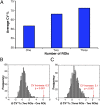Decoding the anatomical network of spatial attention
- PMID: 23300283
- PMCID: PMC3557038
- DOI: 10.1073/pnas.1210126110
Decoding the anatomical network of spatial attention
Abstract
The study of stroke patients with modern lesion-symptom analysis techniques has yielded valuable insights into the representation of spatial attention in the human brain. Here we introduce an approach--multivariate pattern analysis--that no longer assumes independent contributions of brain regions but rather quantifies the joint contribution of multiple brain regions in determining behavior. In a large sample of stroke patients, we found patterns of damage more predictive of spatial neglect than the best-performing single voxel. In addition, modeling multiple brain regions--those that are frequently damaged and, importantly, spared--provided more predictive information than modeling single regions. Interestingly, we also found that the superior temporal gyrus demonstrated a consistent ability to improve classifier performance when added to other regions, implying uniquely predictive information. In sharp contrast, classifier performance for both the angular gyrus and insular cortex was reliably enhanced by the addition of other brain regions, suggesting these regions lack independent predictive information for spatial neglect. Our findings highlight the utility of multivariate pattern analysis in lesion mapping, furnishing neuroscience with a modern approach for using lesion data to study human brain function.
Conflict of interest statement
The authors declare no conflict of interest.
Figures



References
-
- Fellows LK, et al. Method matters: An empirical study of impact in cognitive neuroscience. J Cogn Neurosci. 2005;17(6):850–858. - PubMed
-
- Rorden C, Karnath H-O. Using human brain lesions to infer function: A relic from a past era in the fMRI age? Nat Rev Neurosci. 2004;5(10):813–819. - PubMed
-
- Bates E, et al. Voxel-based lesion-symptom mapping. Nat Neurosci. 2003;6(5):448–450. - PubMed
-
- Haynes JD, Rees G. Decoding mental states from brain activity in humans. Nat Rev Neurosci. 2006;7(7):523–534. - PubMed
Publication types
MeSH terms
Grants and funding
LinkOut - more resources
Full Text Sources
Other Literature Sources
Medical

